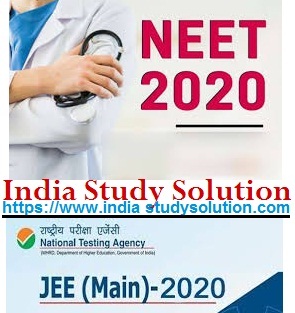Organic Chemistry – Basic Principles, Classification, IUPAC Nomenclature, Purifications, TECHNIQUES and Characterisation of Organic Compounds
India Study Solution Test Series (Practice Questions)
NEET, JEE Mains, JEE Advanced, NTSE | Engineering, BDS, MBBS Admission Test
Hi Guys,
India Study Solution test series Set-3: Here you have 10 new practice questions (Q. No. 21 - 30) with their hints & solutions from our Chemistry Solutions on chapter “Organic Chemistry – Basic Principles, Classification, Nomenclature, Purification and Characterisation of Organic Compounds”.
In each set you will find a combination of most important carefully selected basic with some advanced level questions, utmost required for doing online preparation of all MBBS Admission Tests, Engineering Entrance Exams such as NEET, JEE and also many other Admission Tests or competitive exams.
Friends, believe me ... if you are preparing for any medical (MBBS) or engineering (B.Tech) entrance exam and have still not attempted our previous questions / other sections then you are really missing something very important. So please find links for previous sets at the end or in the drop down menu above and go through them!
Organic Chemistry
(Basic Principles, Classification, IUPAC Nomenclature, Isomerism, Purification and Characterisation of Organic Compounds)
India Study Solution Test Series – Set 3 (Q. No 21-30)
Question 21: Steam distillation is applied to those organic compounds which are steam volatile and:
a. soluble in water
b. insoluble in water
c. sparingly soluble in water
d. insoluble in all solvents
Question 22: For the given alkane
The IUPAC name is
a. 1, 1 dimethyl-5-ethyl octane
b. 6-ethyl-2-methyl nonane
c. 4-ethyl-8-methyl nonane
d. 2-methyl-6-propyl octane
Question 23: There are several criteria for purity of organic compounds. Out of these which one is considered best?
a. Melting point
b. Microscopic examination
c. Mixed melting point
d. Colour
Question 24: The order of decreasing reactivity towards an electrophilic reagent, for the following would be
(i) Benzene
(ii) Toluene
(iii) Chlorobenzene
(iv) Phenol
a. (ii) > (iv) > (i) > (iii)
b. (iv) > (iii) > (ii) > (i)
c. (iv) > (ii) > (i) > (iii)
d. (i) > (ii) > (iii) > (iv)
Question 25: A compound which does not give a positive test in Lassaigne’s test for nitrogen is:
a. Urea
b. Hydrazine
c. Phenyl hydrazine
d. Azobenzene
Question 26: Some meta-directing substituents in aromatic substitution are given. Which one is most deactivating?
a. –SO3H
b. -COOH
c. –NO2
d. –C ≡ N
Question 27: Duma’s method involves the determination of nitrogen content in the organic compound in the form of:
a. NH3
b. N2
c. NaCN
d. (NH4)2 SO4
Question 28: Complete combustion of 15 g of any organic compound gave 44 g of CO2. What is the percentage of carbon in the organic compound?
a. 60
b. 80
c. 40
d. 50
Question 29: Which of the following statement is incorrect:
a. Tollen’s reagent can distinguish propene and propyne
b. Iodoform test can distinguish propanone and ethanal
c. Lucas reagent can distinguish 1-propanol and 2- propanol
d. NaHCO3 can distinguish phenol and benzoic acid.
Question 30: Schiff’s and Piria method is used for the estimation of:
a. nitrogen
b. sulphur
c. halogens
d. oxygen
India Study Solution - Hints and Solutions Chemistry MCQ Test Series
Organic Chemistry
(Basic Principles, Classification, IUPAC Nomenclature, Isomerism, Purification and Characterisation of Organic Compounds)
Hints and Solutions of Organic Chemistry Test Series (MCQ) – Set 3 (Q. No.21–30)
Answer 21: b. Answer 22: b. Answer 23: c. Answer 24: c.
Answer 25: b (Hint: For Lassaigne’s test C-N bond must be present).
Answer 26: c. Answer 27: b. Answer 28: b. Answer 29: b. Answer 30: c.
Organic Chemistry: Basic Principles, Classification, IUPAC Nomenclature, Isomerism, Purification and Characterisation of Organic Compounds
More questions to follow




















